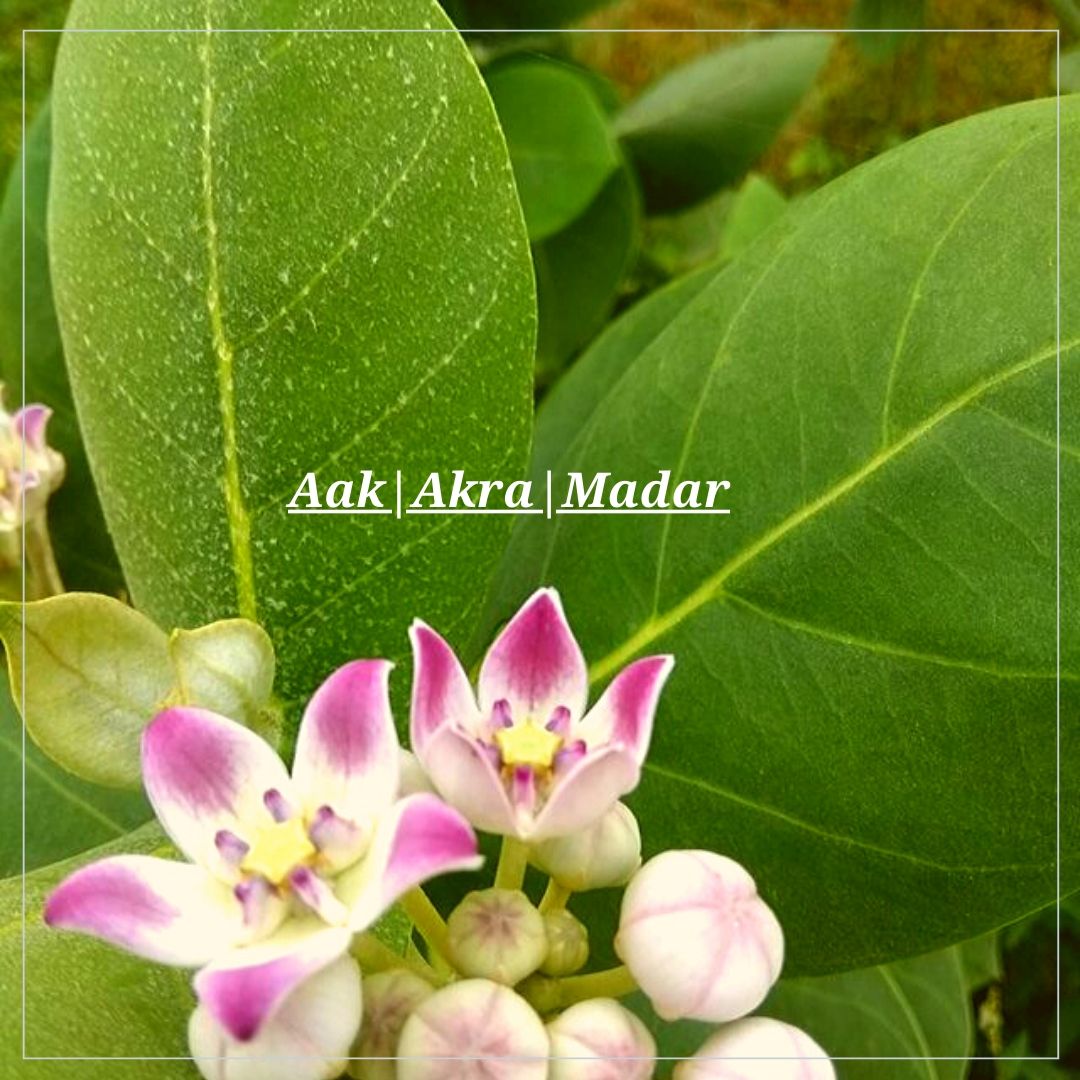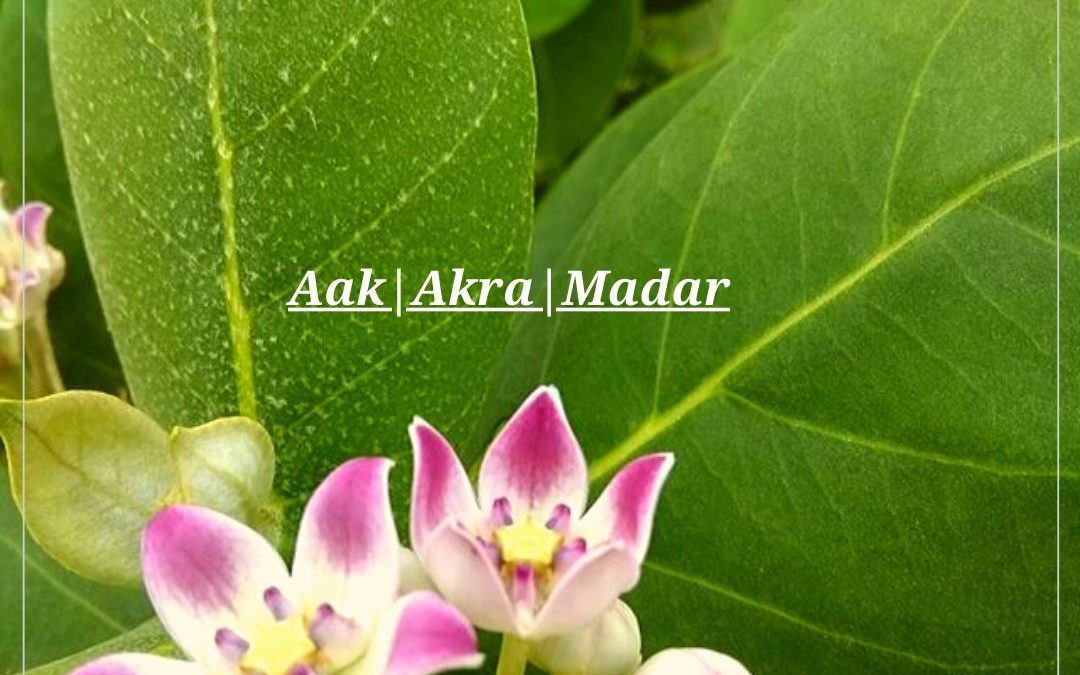Aak | Madar | Akra
It consists of dried leaves. Its Biological Name is Calotropis Procera. It belongs from Asclepiadaceae family. It is a wild shrub, which grows up to a height of 1-3 m and its leaves are 10–13 cm wide by 17–19 cm long. It is a popular medicinal plant found throughout the tropics of Asia and Africa and is used in many traditional systems of medicine.
Important Uses of its various parts – Each part has different medicinal properties
- Calotropis procera latex has been used in leprosy, eczema, inflammation, cutaneous infections, syphilis, malarial and low hectic fevers, and as abortifacient.
- Leaves: in rheumatism, as an anti-inflammatory and antimicrobial.
- Roots: as hepatoprotective agents, against colds and coughs, syphilis and elephantiasis, as an anti-inflammatory, analgesic, antimalarial and antimicrobial.
- Flowers: as cytostatic, abortifacient, antimalarial, in asthma and piles.
- The plant produces latex in the laticifers. Dried latex and chloroform extract of roots possess anti-inflammatory activity.
- Aqueous extract of the flowers has been found to exhibit analgesic, antipyretic and anti-inflammatory activity. The alcoholic extract from different parts possess antimicrobial and spermicidal activity.
- Bast fibres of Calotropis procera (aak) plant have been separated by retting. Its yarn made up of cotton and aak in 1:1 proportion was lower quality or inferior as compared to cotton in respect of strength, fineness and evenness. The aak cloth has high tensile strength (maximum load that a material can support without fracture when being stretched) and abrasion strength (rubbing away by friction) and more weight per square meter than cotton cloth.
- Mosquito control by Calotropis latex.
- The dry latex of Calotropis procera (Asclepiadaceae), a potent anti-inflammatory agent has been evaluated for anti-diarrhoeal activity.
- The enzyme hydrolyses denatured natural substrates like casein, azoalbumin, and azocasein with high specific activity.
- Its leaves and latex of calotropis gigantae are commonly used as an antidote for snake poison.
- Latex of Akra plant is used in curing vomiting and purgation.
Other Names in different languages
Arabic: Ushr, Ushar
Persian: Khark, Zaharnak, Kharak
Assamese: Akand, Akan
Bengali: Akanda, Akone, Aaknaad
English: Madar Tree, Mudar, Gigantic swallow wort, Sodom Apple, Apple of Sodom, Kapok tree, Rubber bush, Rubber tree
Gujrati: Akado, Aakado, Akda, Myhara, Retoakah
Hindi: Aak, Madar, Akra, Akvana
Kannada: Ekka, Ekkemale, Arkagida
Kashmiri: Aeka
Malayalam: Erikka, Erikku, Vallerikku, Neela Eukku
Marathi: Lalrui, Akanda, Lalakara
Oriya: Akondu, Bikkortono, Kotuki
Punjabi: Ak
Sanskrit: Surya Patra, Arka, Alarka, Mandara, Toolphala, Vikirana, Asfota, Alarka
Tamil: Erukku, Badabadam, Yercum
Telegu: Jilledu, Mandaramu, Ekke, Arkamu, Nallajiledu
Urdu: Madar, Aak
Description
Subsessile, 6 – 15 cm by 4.5 – 8 cm. Broadly ovate.


